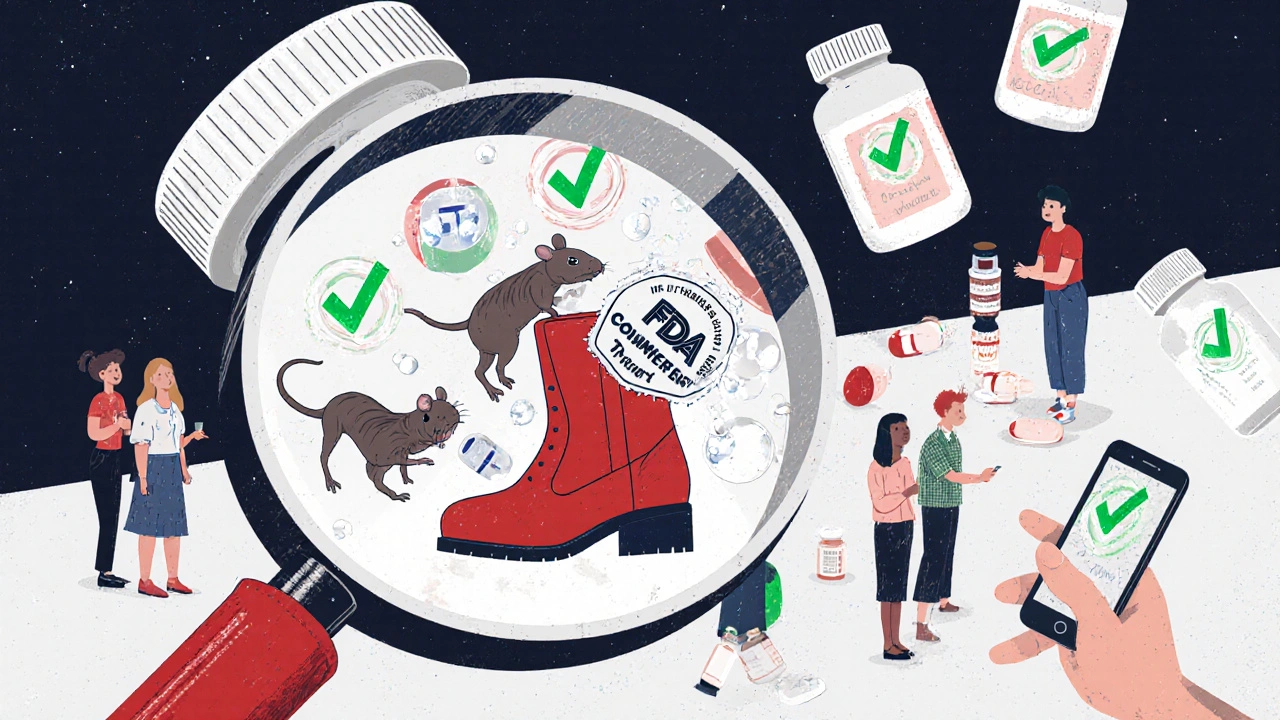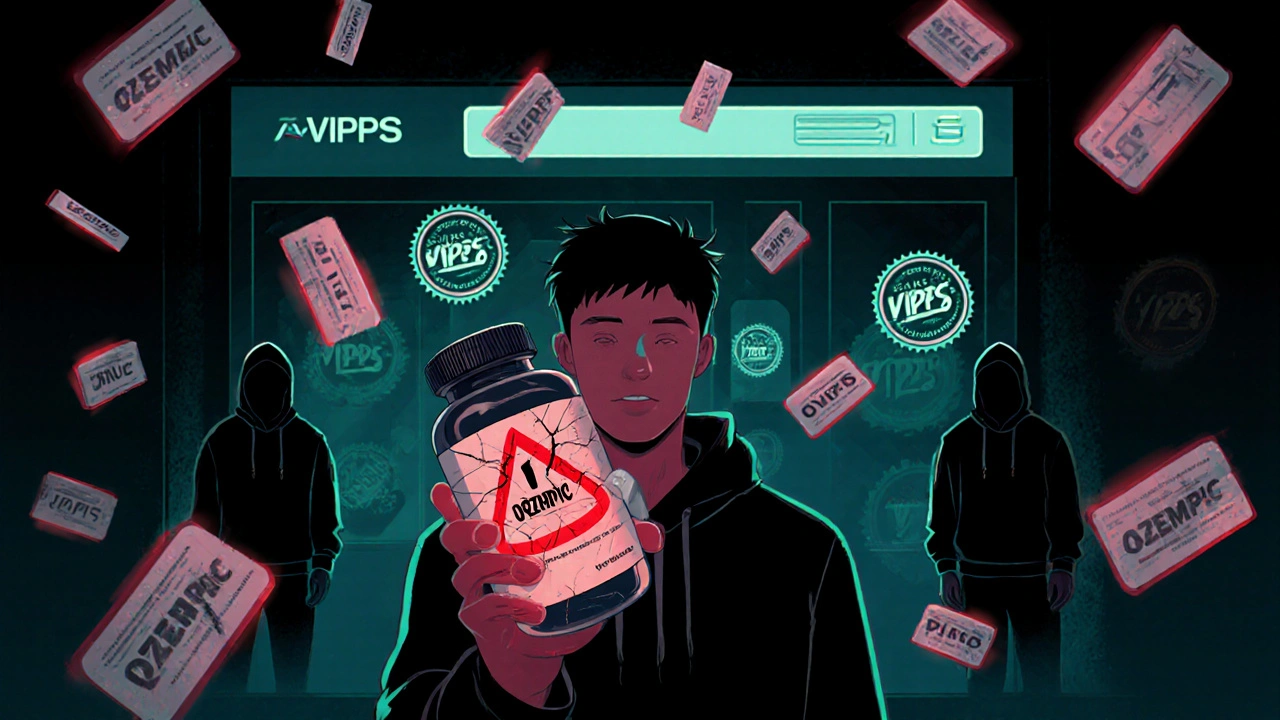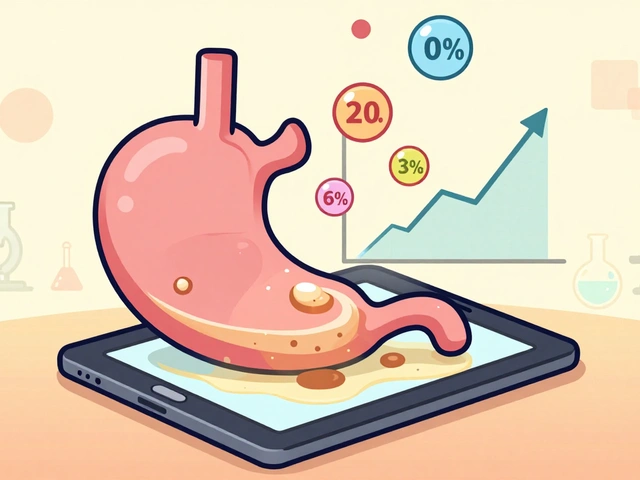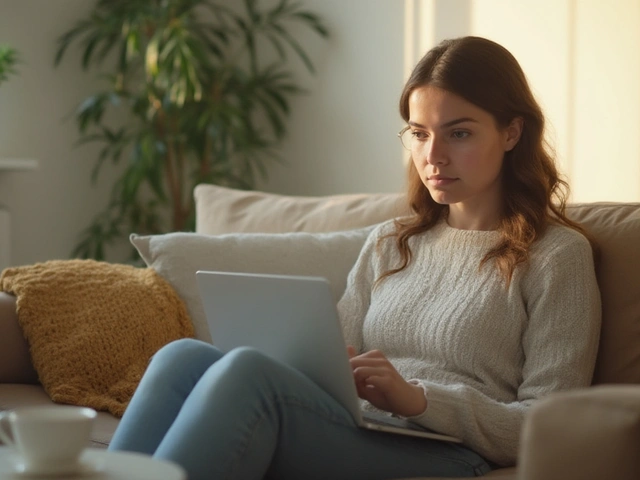Every year, millions of people around the world buy generic medications to save money. They trust that these pills are just as safe and effective as the brand-name versions-because they’re supposed to be. But what if the bottle you bought at a discount online, or picked up from a shady pharmacy, doesn’t contain the drug it claims to? What if it’s a fake? That’s not a hypothetical. It’s happening right now-and the consequences can be deadly.
What Exactly Are Counterfeit Generics?
Counterfeit generics are fake versions of off-patent drugs. They look real. They come in packaging that mimics the real thing. Sometimes, they even have the same color, shape, and imprint. But here’s the catch: they often contain no active ingredient at all. Or worse-they have the wrong one. Some have too little of the drug needed to work. Others contain toxic chemicals like rat poison, floor cleaner, or industrial dyes. Unlike real generics, which must pass strict tests to prove they work the same way as the original drug (within 80-125% of the brand’s effect), counterfeit versions skip every single safety step. No FDA review. No quality control. No lab testing. Just criminals with printing presses and chemical labs. The problem exploded after 2020. During the pandemic, demand surged for antivirals, antibiotics, and later, weight-loss drugs like Ozempic and Mounjaro. Criminals saw an opportunity. In 2024 alone, over 6,400 cases of counterfeit pharmaceuticals were reported across 136 countries. Interpol’s 2025 operation shut down 13,000 illegal websites and seized more than 50 million fake doses.Where Are These Fakes Coming From?
Most counterfeit generics enter the market through unregulated online pharmacies. You might think you’re buying from a Canadian or U.S. pharmacy because the website looks official. But 50% of online pharmacies that hide their physical address are fake, according to the FDA. And 89% of them don’t even require a prescription. In 2025, U.S. Customs intercepted shipments of fake Ozempic, Botox, and erectile dysfunction pills coming from Asia. One Iowa pharmacy was fined $25,000 for selling counterfeit Ozempic. These aren’t rare cases-they’re becoming routine. In low- and middle-income countries, the situation is worse. The WHO estimates that 1 in 10 medicines there are substandard or falsified. In parts of Africa, that number jumps to 70%. Fake malaria pills, antibiotics, and diabetes drugs are flooding markets where people have few other options. Even in wealthy countries, the supply chain is vulnerable. Between September 2023 and January 2025, over 2,400 bulk shipments of semaglutide (the active ingredient in Ozempic) were imported into the U.S. Nearly 200 of them were legally blocked-but still slipped through.How to Spot a Fake Medicine
You can’t always tell by looking. Some counterfeits are so good, even pharmacists get fooled. But there are red flags you can check:- Packaging errors: Misspelled words, blurry logos, mismatched fonts, or incorrect expiration dates. Real drug companies don’t make these mistakes.
- Unusual appearance: If the pill looks different than the last one you took-different color, texture, or size-it could be fake.
- Price too good to be true: Real generics cost 80-85% less than brand names. But if you’re seeing a pill that should cost $50 selling for $5, it’s not a deal. It’s a trap.
- No pharmacy license: Legitimate online pharmacies display a VIPPS seal (Verified Internet Pharmacy Practice Sites). If you don’t see it, walk away.
- No prescription required: Any website selling controlled medications like Ozempic, Viagra, or Xanax without a prescription is breaking the law-and selling fakes.

High-Risk Drugs to Watch Out For
Some medications are targeted more than others because they’re expensive, in high demand, or used long-term:- Ozempic, Mounjaro, Wegovy: These weight-loss and diabetes drugs are the most counterfeited in 2025. Patients report no blood sugar control or weight loss after months of use-only to find out their pills were fake.
- Erectile dysfunction pills: Fake versions of Viagra and Cialis often contain dangerous substances like amphetamines or sildenafil analogs that cause heart attacks.
- Antibiotics: Fake antibiotics with too little active ingredient are fueling antimicrobial resistance. The Review on Antimicrobial Resistance warns that by 2050, 10 million deaths a year could be tied to ineffective treatments.
- Insulin, blood pressure meds, cancer drugs: These aren’t just ineffective-they’re lethal. A counterfeit insulin vial can kill within hours.
How to Verify Your Medication
There are tools you can use to check if your medicine is real:- Manufacturer verification systems: Novo Nordisk’s “Verify Your Pen” app lets you scan the QR code on Ozempic pens. In Q3 2025, over 2 million scans were done-and 1.8% were flagged as fake.
- TrueMed app: This free app (rated 4.7/5 on Google Play) lets you scan barcodes on pills and compare them to a database of authentic products. It’s especially popular for erectile dysfunction drugs.
- National Drug Code (NDC): Every U.S. medication has a unique 11-digit NDC number on the packaging. You can look it up on the FDA’s website to confirm it’s registered.
- Check the source: Buy only from pharmacies you know. If you’re buying online, make sure it’s licensed in your state and displays its physical address.
What to Do If You Suspect a Fake
If your medicine doesn’t work-or makes you feel worse-don’t ignore it. Take action:- Stop taking it immediately.
- Keep the packaging and pills as evidence.
- Report it to the FDA’s MedWatch program. They track fake drugs and alert the public.
- Contact the manufacturer’s anti-counterfeiting hotline. Pfizer, for example, runs a 24/7 hotline (1-800-593-5685) for consumers.
- Warn others. If you bought it online, leave a review. If it was a local pharmacy, tell the health department.

Why This Matters More Than You Think
Counterfeit drugs aren’t just a scam-they’re a public health crisis. When people take fake antibiotics, bacteria survive and evolve into superbugs. When diabetics take fake insulin, they end up in the hospital. When cancer patients get fake chemotherapy, their tumors grow unchecked. The economic cost? Over $30 billion a year globally. The human cost? Thousands of preventable deaths. And it’s getting worse. Criminals are using AI to generate fake packaging, replicate QR codes, and even create fake websites that mimic real pharmacies. By 2027, experts predict counterfeit incidents will rise 15-20% each year.How to Stay Safe: A Simple Checklist
You don’t need to be an expert to protect yourself. Just follow these steps:- Only buy from licensed pharmacies-online or in person.
- Never buy prescription drugs without a valid prescription.
- Check for the VIPPS seal on online pharmacies.
- Compare your pills to previous batches. If something looks off, question it.
- Use manufacturer verification tools when available.
- Report anything suspicious to the FDA or your local health authority.
Final Thought: Your Health Isn’t a Bargain
Buying cheap meds online might save you money today-but it could cost you your life tomorrow. Real generics are safe because they’re regulated. Fake ones are dangerous because they’re not. The system isn’t perfect. But you have power. Know where to buy. Know how to check. Know what to report. Your life depends on it.How common are counterfeit generic medications?
Counterfeit generics are alarmingly common. The Pharmaceutical Security Institute recorded over 6,400 incidents globally in 2024. In low- and middle-income countries, up to 1 in 10 medicines are falsified. In some African regions, that number climbs to 70%. Even in the U.S., fake versions of high-demand drugs like Ozempic and Viagra are regularly intercepted at borders and sold through rogue websites.
Can I trust online pharmacies that offer deep discounts?
No. Legitimate pharmacies don’t sell life-saving drugs at 80% off. If a website offers Ozempic for $20 a pen when the real price is over $1,000, it’s a scam. The FDA warns that 50% of online pharmacies hiding their physical address are fake. Always look for the VIPPS seal and verify the pharmacy’s license with your state board of pharmacy.
What should I do if my fake medication made me sick?
Stop taking the medication immediately and seek medical help. Keep the packaging and any remaining pills as evidence. Report the incident to the FDA’s MedWatch program at fda.gov/medwatch. You can also call the manufacturer’s anti-counterfeiting hotline. Reporting fake drugs helps protect others and triggers investigations.
Are all generics risky?
No. Legitimate generics are safe, effective, and regulated. They must prove bioequivalence to brand-name drugs through strict testing by the FDA or EMA. The danger comes only from counterfeit versions sold illegally. Stick to trusted pharmacies and verified sources, and you’re not at risk.
Is there a way to test my pills at home?
There’s no reliable home test for active ingredients. However, you can use apps like TrueMed to scan barcodes and compare your medication to verified databases. For high-risk drugs like Ozempic, use the manufacturer’s official verification system. If you suspect a fake, contact a pharmacist or health authority-they can send samples to labs for chemical analysis.
Why are fake medications so hard to detect?
Criminals now use pharmaceutical-grade equipment to replicate packaging, printing, and even security features like holograms and QR codes. Some counterfeits are so accurate that even experienced pharmacists can’t tell the difference without lab testing. That’s why relying on multiple verification methods-like checking the source, using manufacturer apps, and reporting inconsistencies-is critical.
What’s being done to stop counterfeit drugs?
Governments and manufacturers are fighting back. The EU requires safety features on all prescription packaging. India now mandates QR codes on drug containers. The FDA has increased inspections of imported drugs, especially semaglutide products. Interpol’s Operation Pangea shuts down thousands of illegal websites yearly. But enforcement is uneven, and criminals adapt quickly. Public awareness and reporting remain key tools in the fight.






Leisha Haynes
26 November, 2025 . 11:59 AM
So i bought my Ozempic from some 'Canadian' site last year for $30 a pen
thought i was a genius
turns out my blood sugar was just floating around like a balloon
turned out fake
now i buy from my local pharmacy and pay the extra
but hey at least i'm not dead
Jennifer Griffith
27 November, 2025 . 05:35 AM
why do people even bother with generics anyway just buy the brand name duh
prasad gaude
28 November, 2025 . 23:13 PM
in india we call these 'chamcham medicines' - sweet on the outside, poison inside
my cousin took fake diabetes pills for six months
lost his foot
the pharmacy owner? He was just a guy with a WhatsApp group and a printer
we don't have FDA here
we have hope and prayer
and sometimes, a lucky pharmacist who knows the pill shape by heart
Pallab Dasgupta
29 November, 2025 . 15:17 PM
listen i get it - money’s tight
but let me tell you something
your body ain’t a thrift store
you wouldn’t buy a fake airbag for your car
so why the hell are you buying fake insulin?
the criminals aren’t just stealing your cash
they’re stealing your future
and guess what? They’re laughing while you’re in the ER
don’t be the statistic
go to the pharmacy
ask questions
be the person who says NO
your life is worth more than $20
Kimberley Chronicle
1 December, 2025 . 05:42 AM
the regulatory arbitrage here is staggering - pharma supply chains have become fragmented globalized networks with zero end-to-end traceability
the blockchain-based serialization initiatives in the EU are promising but underimplemented
and the WHO’s surveillance infrastructure in LMICs is chronically underfunded
until we institutionalize real-time batch verification via IoT-enabled packaging, we’re just playing whack-a-mole with counterfeiters who leverage AI-generated packaging templates
the real solution isn’t consumer vigilance - it’s systemic integrity
Lisa Odence
2 December, 2025 . 17:08 PM
OMG I just realized I bought my blood pressure meds from that site with the blue logo... 😱
Thank you for this post!! I'm going to call my doctor right now and get a new prescription
Also, I'm reporting the website to the FDA!!
PS: I love how you included the NDC number tip!! 🙌💖
Everyone, please, please, please check your meds!! Your life is not a gamble!! 🚨💊
Ellen Sales
4 December, 2025 . 10:47 AM
you know what’s worse than fake meds?
the system that lets this happen
the same people who say 'buy American' won't pay $50 for a generic
but they'll click 'buy now' on a site that looks like CVS
we're not just victims
we're enablers
we want cheap
we want easy
we want magic pills
and then we're shocked when the magic turns to poison
it's not just criminals
it's us
we're the demand
and until we stop treating our health like a discount aisle
nothing will change
Srikanth BH
6 December, 2025 . 08:29 AM
brother, I have seen this in my village - people take fake antibiotics for fever
they get better for a few days
then it comes back stronger
now the bacteria don't even care about real drugs
we are building a world where medicine doesn't work
not because science failed
but because we chose convenience over care
please, for the love of your family - buy from a real pharmacy
even if it hurts your wallet
your life is not a bargain
Shirou Spade
7 December, 2025 . 08:39 AM
there’s a quiet violence in counterfeit medicine
it doesn’t scream
it doesn’t explode
it just... doesn’t work
and while you wait for it to work
your body decays
your organs strain
your hope shrinks
and then you blame yourself
'maybe I'm not trying hard enough'
but the truth? You were sold a lie wrapped in a pill
and the lie didn't care if you lived or died
it only cared if you paid
Amy Hutchinson
8 December, 2025 . 05:23 AM
so like i just found out my sister bought fake Mounjaro and lost 2 pounds in 3 months
and now she's mad at the drug
honey it's not the drug it's the damn website
you can't trust anyone online anymore
like literally just go to CVS and pay the extra $10
it's not that hard
Josh Zubkoff
8 December, 2025 . 23:08 PM
why are we even talking about this like it's a surprise?
the FDA is a joke
the DEA is asleep
the pharmacies are all owned by the same 3 corporations
and the 'verified' websites? They're all owned by offshore shell companies with fake addresses
you think scanning a QR code stops this?
the same people who made the fake QR code made the app that scans it
we're not being protected
we're being manipulated
and this post? It's just another distraction
while the real criminals make billions
and we're left checking pill colors like it's some kind of game
Erika Hunt
10 December, 2025 . 06:35 AM
It’s fascinating, really, how the convergence of globalization, digital commerce, and pharmaceutical demand has created this perfect storm of vulnerability - especially when you consider that the supply chain for medications is one of the most complex logistical systems on the planet, involving raw material sourcing, manufacturing, bulk distribution, repackaging, warehousing, and finally, direct-to-consumer delivery - and yet, there’s still no universal, tamper-proof, blockchain-integrated, real-time authentication protocol that’s mandated across all jurisdictions, even though the technology exists and has been piloted in the EU and Singapore - and it’s not that regulators don’t know about it, it’s that they’re overwhelmed, underfunded, and often politically constrained - so we end up with this patchwork of voluntary systems, consumer vigilance, and hope - which, frankly, is not a public health strategy, it’s a prayer - and while apps like TrueMed are helpful, they’re reactive, not preventive - and until we treat pharmaceutical integrity with the same urgency as aviation safety or nuclear material control - we’re just rearranging deck chairs on the Titanic, and the iceberg? It’s already here.